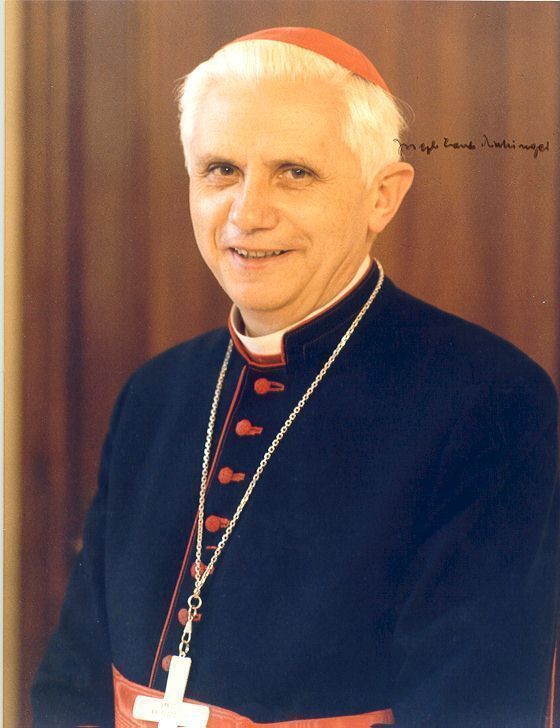 Traditionalists have frequently been critical of the modern Magisterium for issuing way too many documents on way too many issues that are all way too long and say way too little. A good example is Gaudium et Spes, which despite its 90+ pages, manages to say very little of substance and appears to the reader in 2007 as one of the most dated, time-bound and wordy of all the Vatican II documents. We have yearned for the former days when popes like Pius X issued simple decrees in the forms of affirmations followed by anathemas that were usually less than ten pages in length. Consider even older bulls, like the pivotal bulls of Boniface VIII, Clericos Laicos (1296) and Unam Sanctam (1302), both of which are a single printed page in length and yet were of immense importance in the Church's history.
Traditionalists have frequently been critical of the modern Magisterium for issuing way too many documents on way too many issues that are all way too long and say way too little. A good example is Gaudium et Spes, which despite its 90+ pages, manages to say very little of substance and appears to the reader in 2007 as one of the most dated, time-bound and wordy of all the Vatican II documents. We have yearned for the former days when popes like Pius X issued simple decrees in the forms of affirmations followed by anathemas that were usually less than ten pages in length. Consider even older bulls, like the pivotal bulls of Boniface VIII, Clericos Laicos (1296) and Unam Sanctam (1302), both of which are a single printed page in length and yet were of immense importance in the Church's history.I would like to give an example of a modern document from the Magisterium that I think gives us hope that the traditional way of promoting Catholic teaching is not dead. This is a document called Note on the Minister of the Sacrament of the Anointing of the Sick, put out by Cardinal Ratzinger and the CDF in 2005 and meant to answer objections as to why deacons and lay persons could not administer the sacrament of Anointing of the Sick
There are three things about this document I would like to draw your attention to. First, its brevity. Printed out, it is only about three pages long with the accompanying letter.
Second, it is a very definitive, cut and dry definition. It states the Catholic position and then defines it as definitive tenenda. This is a Latin phrase which an earlier 1998 CDF document on the Professio Fidei defined as meaning a truth which "Every believer, therefore, is required to give firm and definitive assent to... based on faith in the Holy Spirit's assistance to the Church's Magisterium, and on the Catholic doctrine of the infallibility of the Magisterium in these matters. Whoever denies these truths would be in a position of rejecting a truth of Catholic doctrine and would therefore no longer be in full communion with the Catholic Church." There is no ambiguity here; not one iota. The doctrine is clarified, is given the title definitive tenenda, and it is declared that anyone who disagrees would be out of communion with the Church.
Third, I would like to draw attention to the fact that most of the brief document is spent reiterating Catholic Tradition. The Council of Florence, Gratian's Decretals and even Pope Innocent I are all quoted in support of the orthodox position; and that is only a few of the sources named. This demonstrates amply a point which Fr. Ripperger, FSSP, has pointed out many times: when a Magisterium does feel the need to issue a decree on a matter of doctrine, it is the new decree that must be interpreted in light of the old, not vice versa. We can see this in this particular document: Ratzinger lists sufficient Scriptural and Traditional proofs for the orthodox position and proceeds to restate what the Church has always taught on the matter.
I urge you all to view this document. Even if you don't care about why a deacon can't administer the Sacrament of Anointing (which we Trads know is really called Extreme Unction), I still recommend you check this out an an example of this definitive, unambiguous, brief Magisterial document in line with Catholic Tradition. Let's hope that Benedict XVI follows this model in his future encyclicals.

2 comments:
PROFESSIO FIDEI not "Profession Fideo" !
Despite a "lapsus calami" here or there ,I am very fond of your blog and I love to read from you daily.Thank you and God bless you.
Your friend Sergio
Oops...thanks Sergio. This blog is operated while I am at work, usually on the fly, and often with not a lot of time for proofreading. Thanks for your corrections, especially in the area of lingua latina.
Boniface
Post a Comment